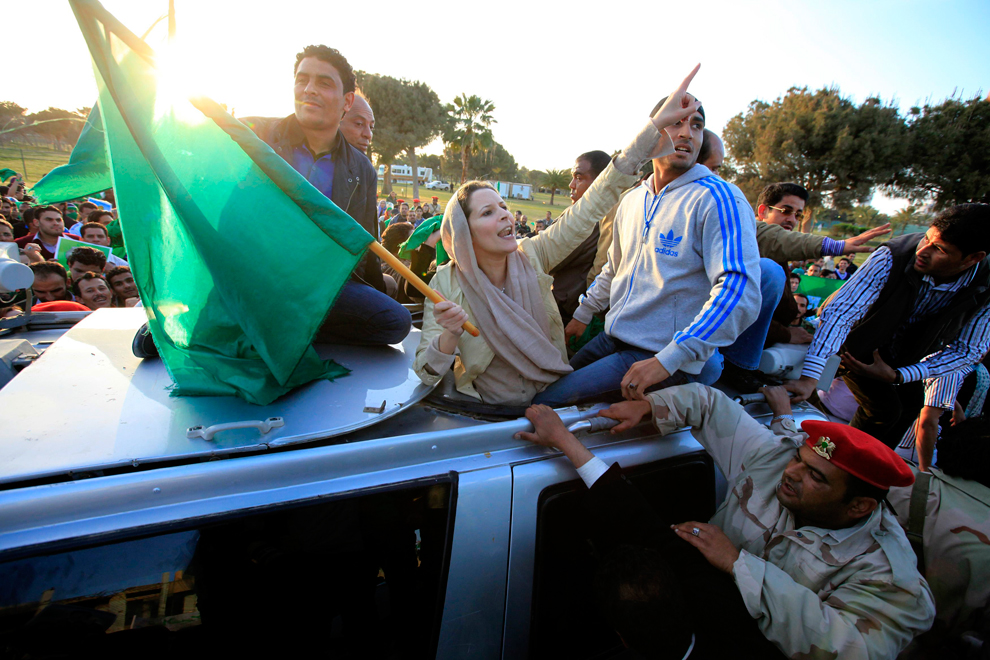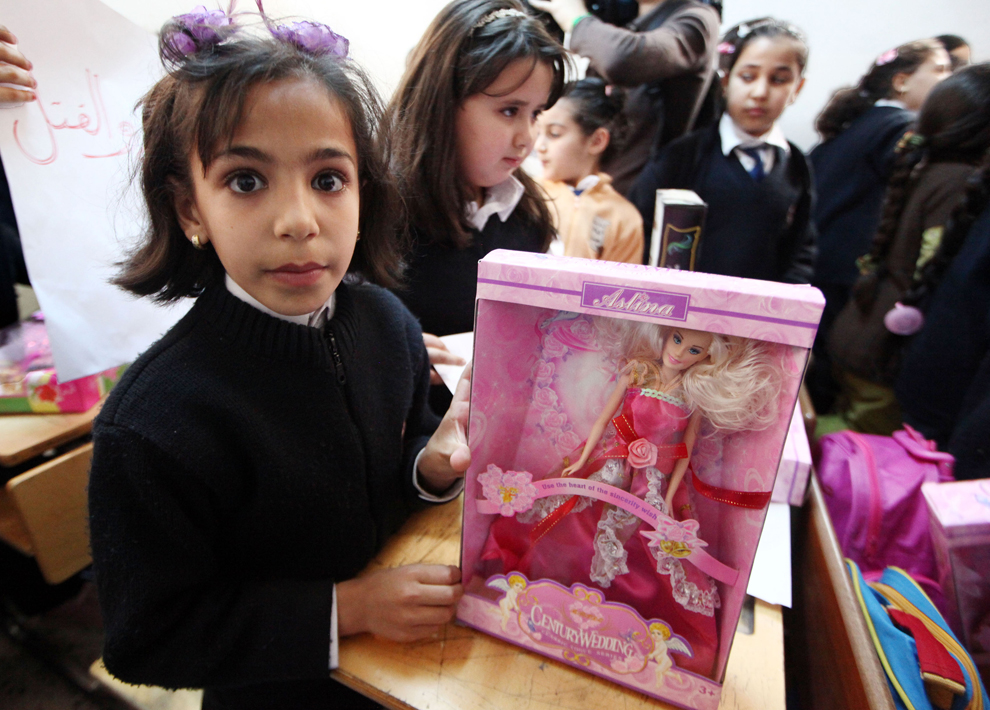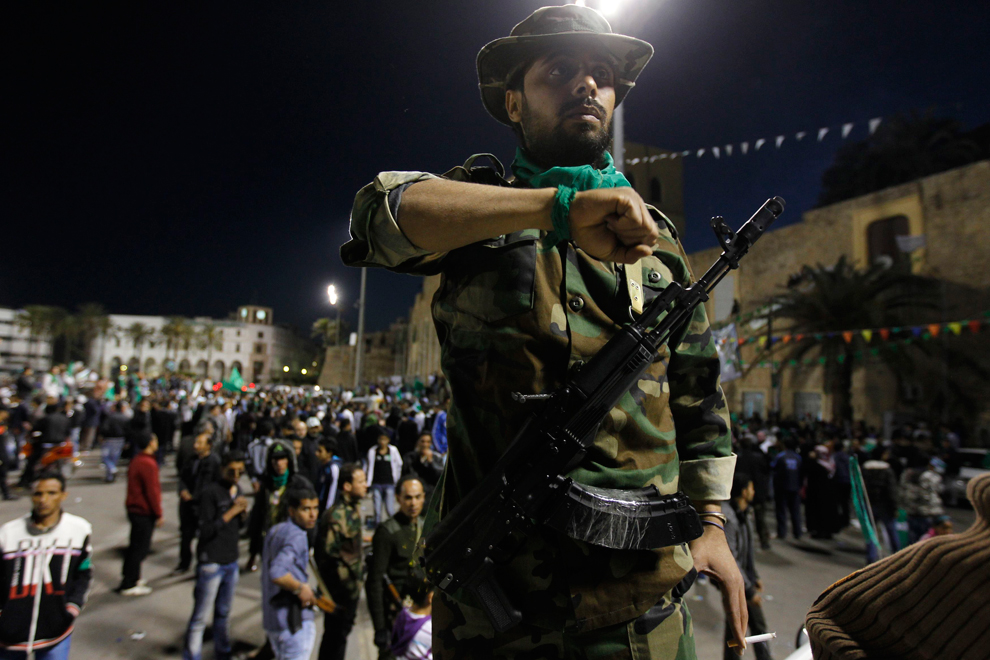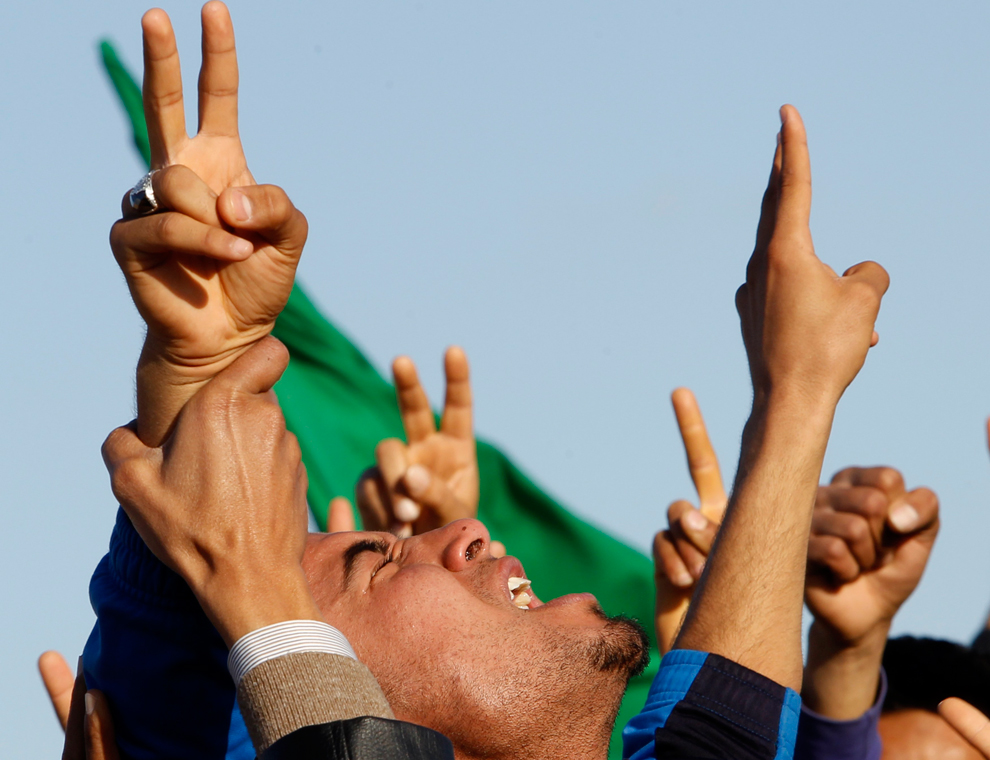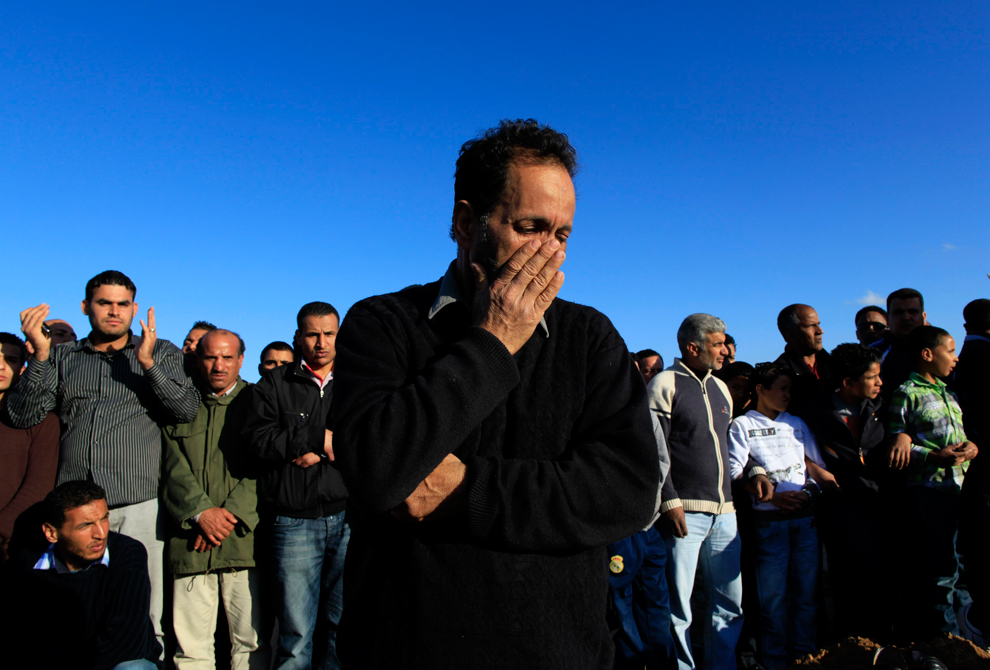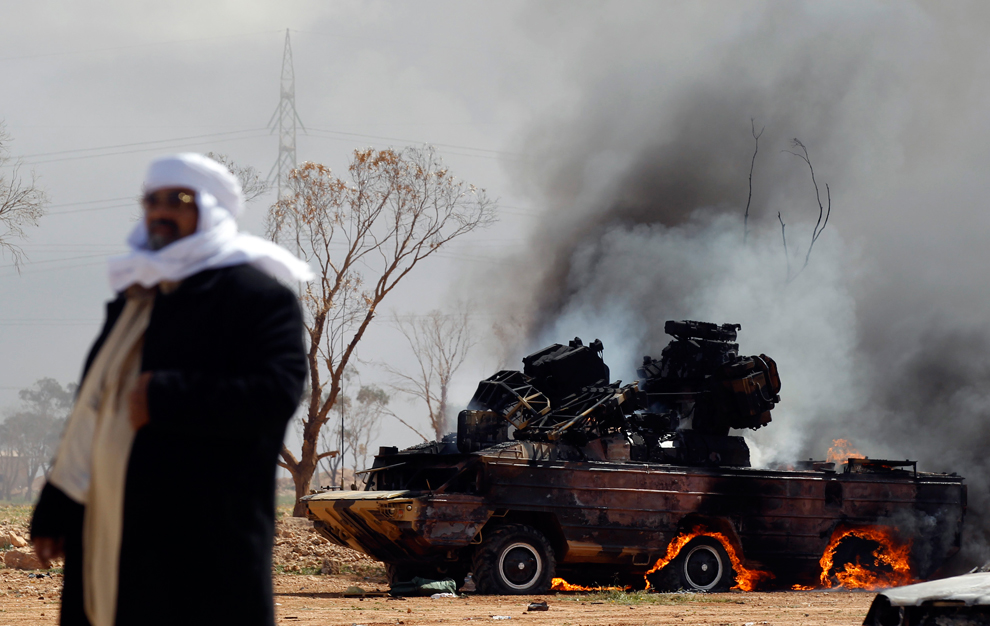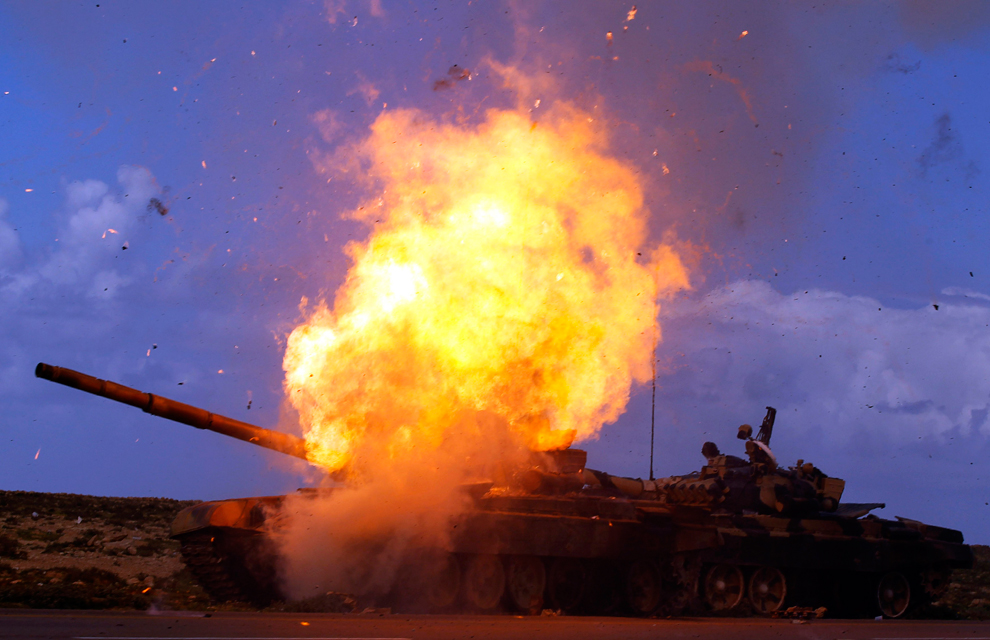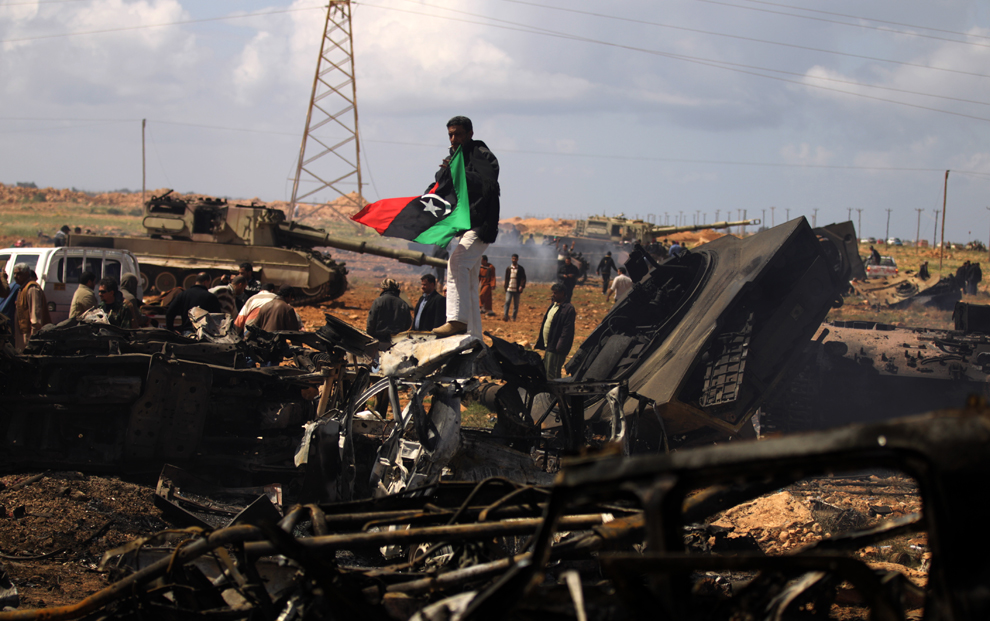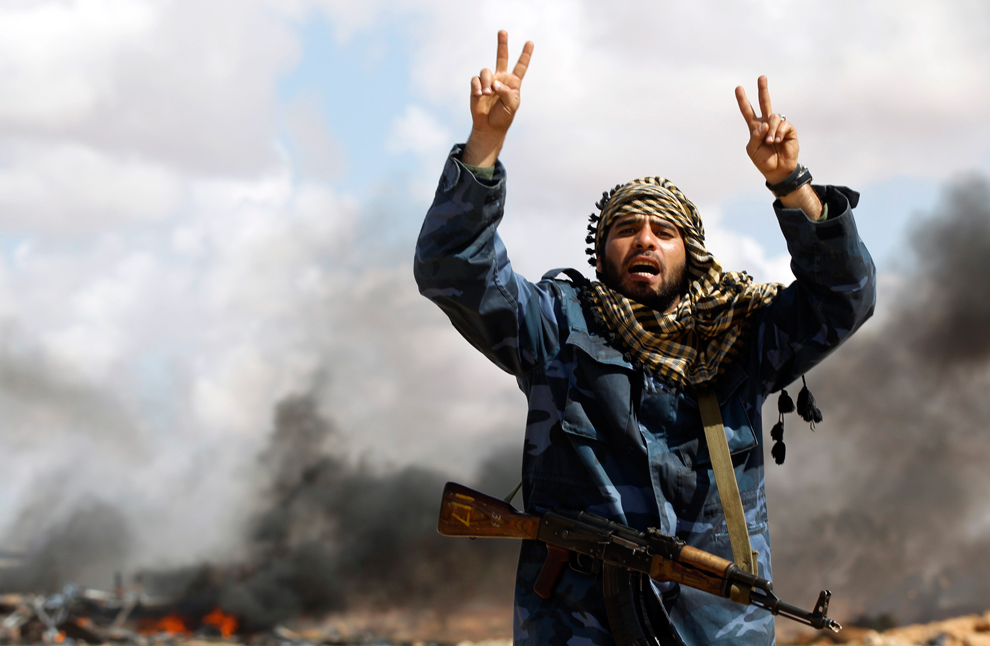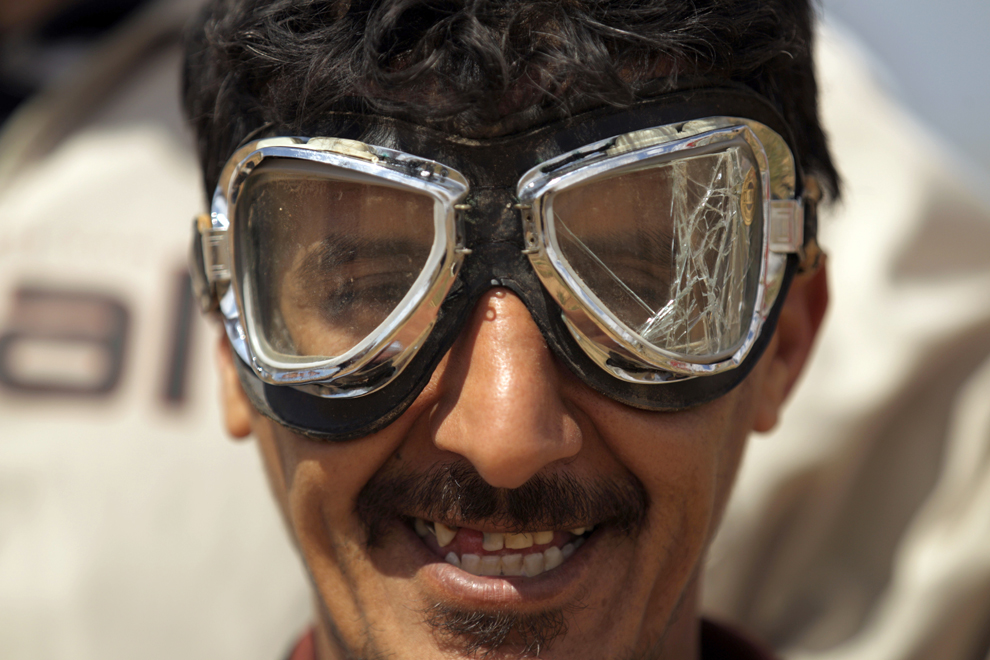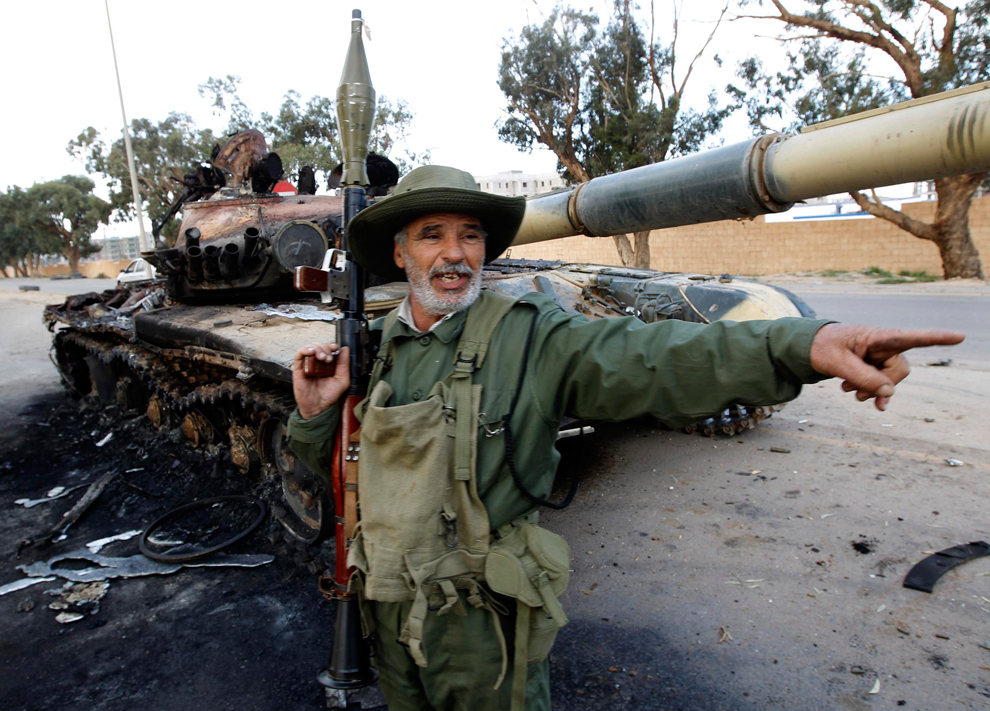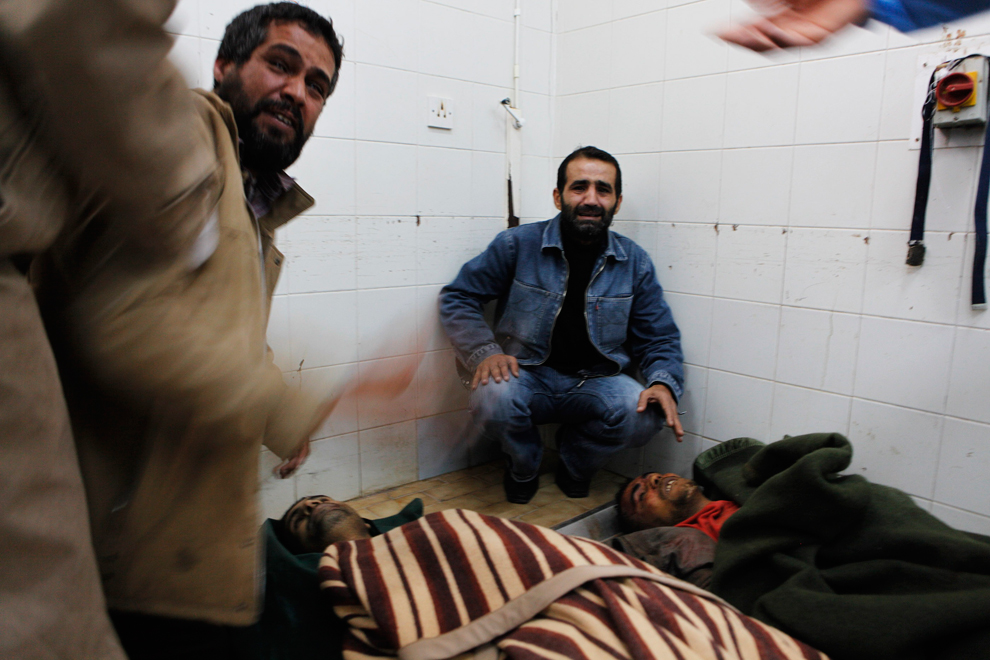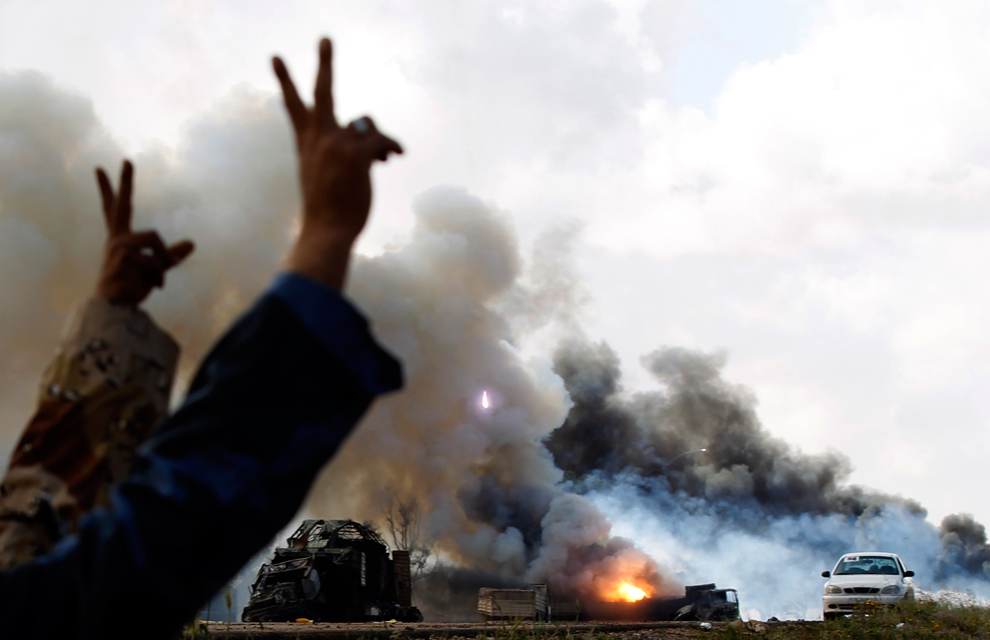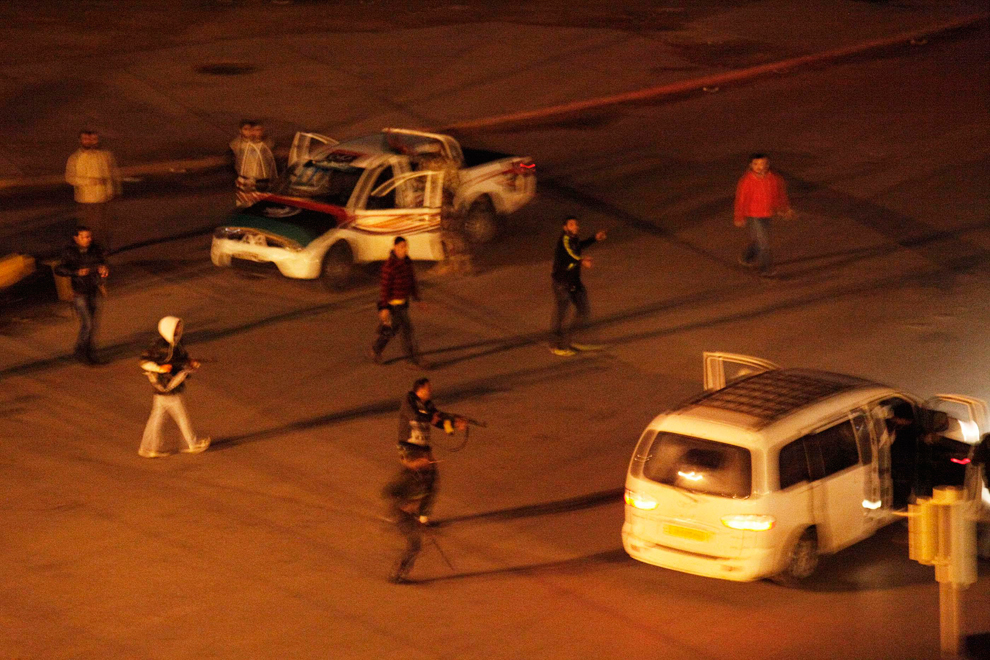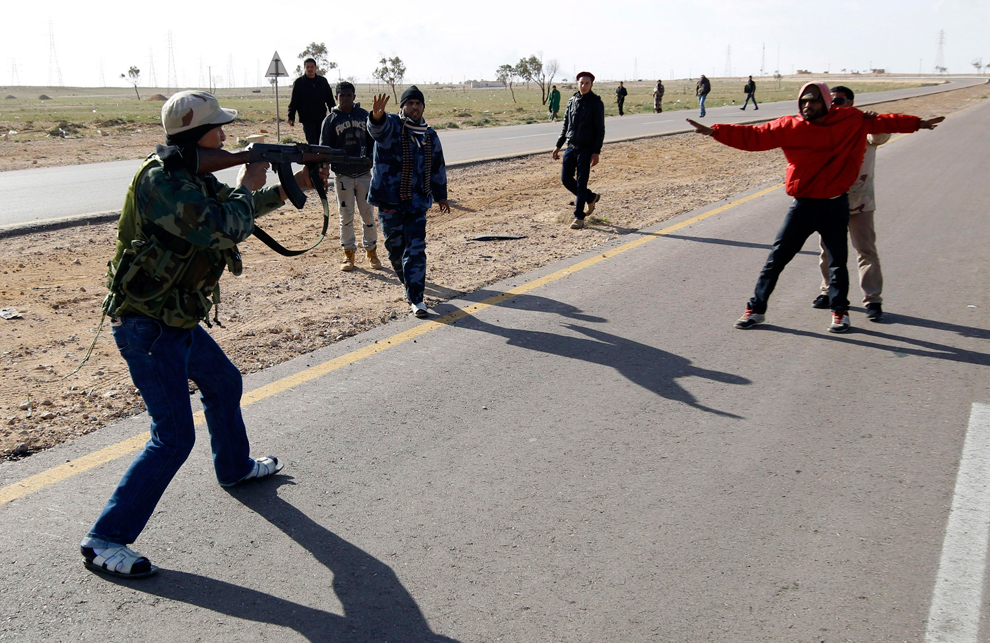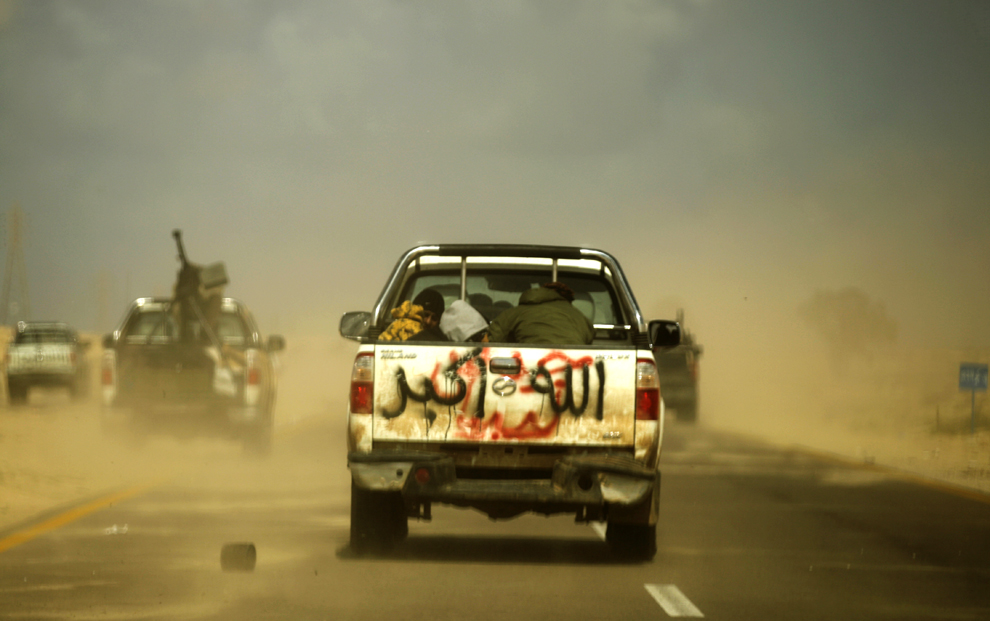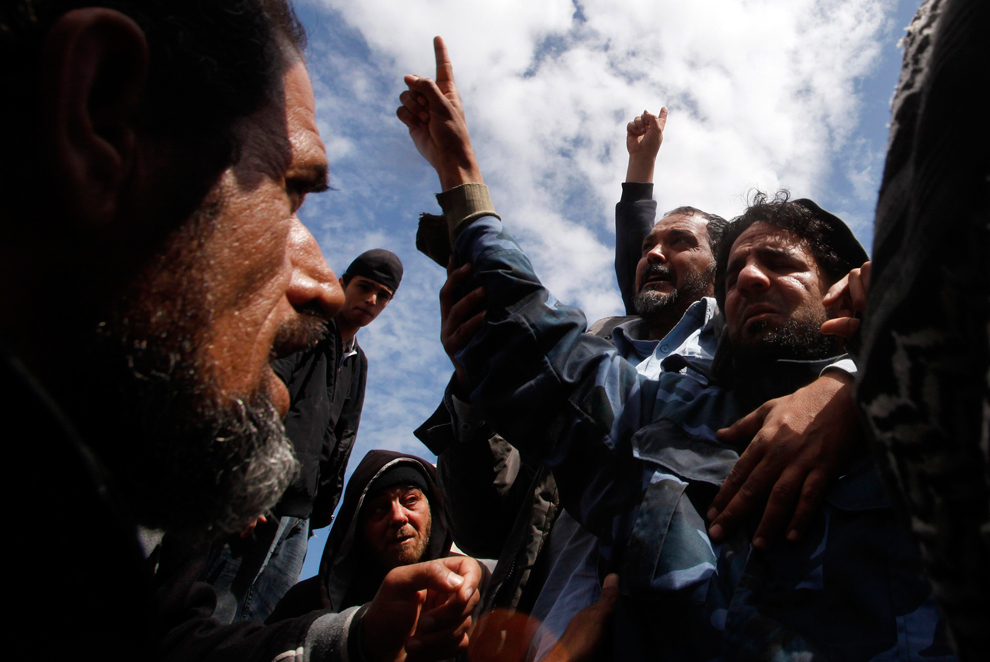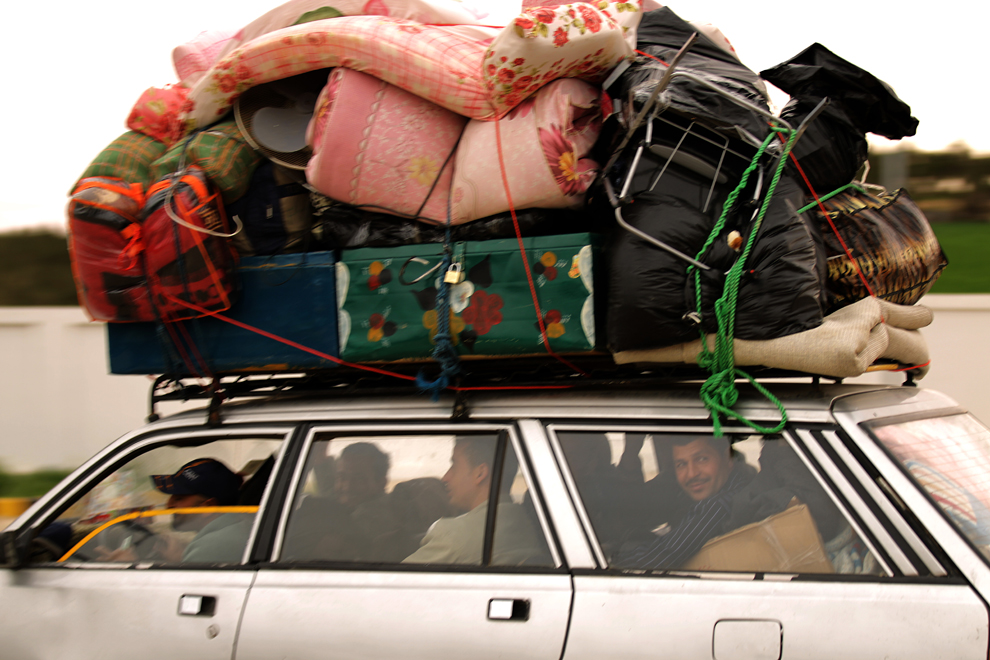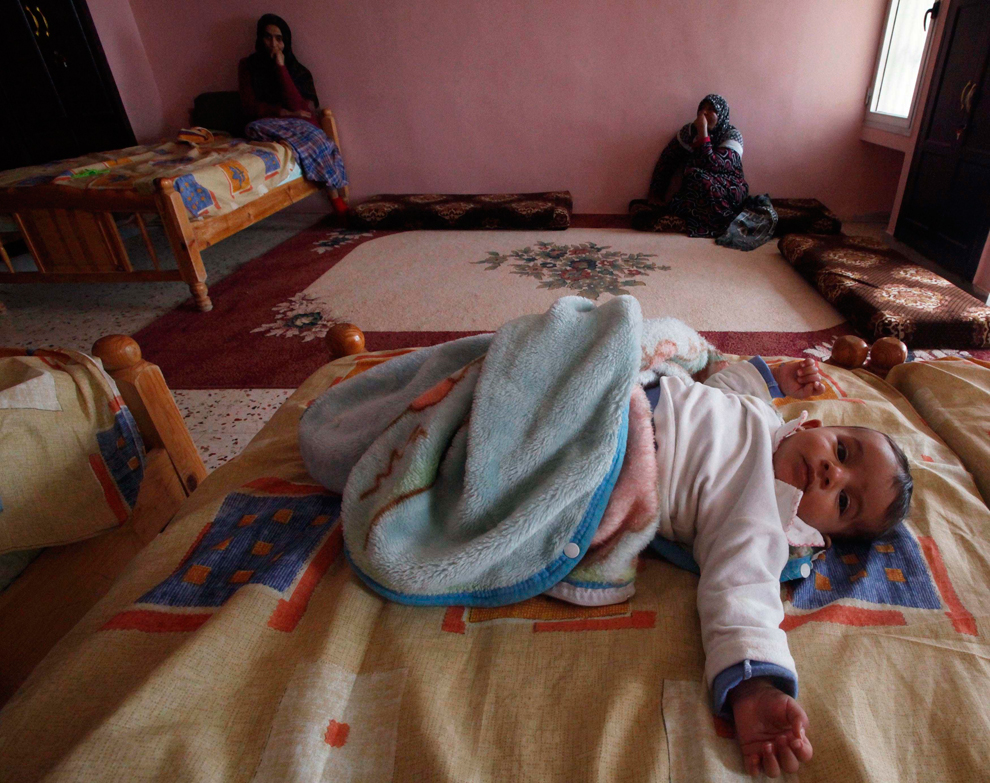Libya’s economy is heavily reliant on oil exports.
Libya relies on oil and natural gas to satisfy energy consumption demand. Economic growth in Libya is dependent on the hydrocarbon industry. According to the World Bank, the country’s hydrocarbon exports account for over 95 percent of total merchandize exports and revenues from the oil and natural gas sectors amount to over half of the country’s gross domestic product (GDP). Since the United Nations and the United States lifted sanctions over Libya in 2003 and 2004, respectively, oil majors have stepped up exploration efforts for oil and natural gas in the country. Likewise, companies have tried using enhanced oil recovery (EOR) techniques to increase production at maturing fields. Over the next six years, Libya would like to see oil production capacity increase by 40 percent from 1.8 million barrels per day (bbl/d) to 3 million bbl/d by 2013.


Oil
Libya has the largest proven oil reserves in Africa. The country hopes to increase oil production capacity through increasing exploration and EOR projects.
Libya, a member of the Organization of Petroleum Exporting Countries (OPEC), holds the largest proven oil reserves in Africa, followed by Nigeria and Algeria (see graph below). According to Oil and Gas Journal (OGJ), Libya had total proven oil reserves of 41.5 billion barrels as of January 2007, up from 39.1 billion barrels in 2006. About 80 percent of Libya’s proven oil reserves are located in the Sirte basin, which is responsible for 90 percent of the country’s oil output. Libya remains "highly unexplored" according to reports by Wood Mackenzie, and only around 25 percent of Libya is covered by exploration agreements with oil companies. The under-exploration of Libya reflects the impact of former sanctions and also stringent fiscal terms imposed by Libya on foreign oil companies.

Production
According to the International Crude Oil Market Handbook, Libya’s National Oil Company (NOC) would like to raise oil production from 1.80 million bbl/d in 2006 to 2 million bbl/d by 2008 and to 3 million bbl/d by 2010-2013. In large part, NOC’s production goals depend on its ability to finance its share of development costs. Future foreign investment into the oil sector is likely, especially with the improved investment climate that stems from the United Nations and United States lifting sanctions. Previously, sanctions had caused delays in a number of field development and EOR projects and had deterred foreign capital investment. Overall, Libya is considered a highly attractive oil province due to its low cost of oil recovery (as low as $1 per barrel at some fields), the high quality of its oil, and its proximity to European markets.

Exports
With domestic consumption of 284,000 bbl/d in 2006, Libya had estimated net exports (including all liquids) of 1.525 million bbl/d. According to 2006 official trade data as reported to the Global Trade Atlas, the vast majority of Libyan oil exports are sold to European countries like Italy (495,000 bbl/d), Germany (253,000 bbl/d), Spain (113,000) bbl/d and France (87,000 bbl/d). With the lifting of sanctions against Libya in 2004, the United States has increased its imports of Libyan oil. The United States imported an average of 85,500 bbl/d of total Libyan oil exports in 2006, up from 56,000 bbl/d of oil imports in 2005.

Libyan oil is generally light (high API gravity) and sweet (low sulfur content), but can also be thick and waxy. The country's nine export grades have API gravities that range from 26o – 44o. While the lighter, sweeter grades are generally sold to Europe, the heavier crude oils are often exported to Asian markets. Most Libyan oil is sold on a term basis, including to the country's Oilinvest marketing network in Europe; to companies like Agip, OMV, Repsol YPF, Tupras, CEPSA, and Total; and small volumes to Asian and South African companies.
Field Development and Exploration
With state-operated oil fields undergoing a 7-8 percent natural decline rate, Libya's challenge is maintaining production at mature fields, while finding new oil and developing new discoveries. In November 2005, Repsol YPF (operator) announced that it had discovered a significant new oil deposit of light, sweet crude that extends over two licenses in the Murzuq Basin. Industry experts believe the discovery to be one of the biggest made in Libya for several years. The discovery is partly located in license NC-186, which currently produces around 60,000 bbl/d. Production on the license is expected to increase over the next 4-year period (2007-2011) by 100,000 – 150,000 bbl/d as oil from the discovery comes online. Repsol YPF is joined by a consortium of partners that includes OMV, Total and Norsk Hydro.
Also located in Murzuq Basin is Eni’s Elephant field. In October 1997, an international consortium led by British company Lasmo, along with Eni and a group of five South Korean companies, announced that it had discovered large recoverable crude reserves (around 700 million barrels) at the NC-174 Block, 465 miles south of Tripoli. Lasmo, which was purchased by Eni in 2001, estimated that production from the field would cost around $1 per barrel. Elephant began production in February 2004 at around 10,000 bbl/d. In 2006, Eni indicated that Elephant was producing at around 125,000 bbl/d, and the company was hoping to see the field reach full capacity of 150,000 bbl/d by 2008.
Waha Oil Company’s (WOC) Waha fields currently produce around 350,000 bbl/d, down from around 1 million bbl/d in 1969 and 400,000 bbl/d in 1986. However, WOC expects to increase Waha output by around 200,000 bbl/d over the next couple of years. In 2005, ConocoPhillips and co-venturers reached an agreement with NOC to both return to its operations in Libya and to extend the Waha concession by 25 years. ConocoPhillips operates the Waha fields with a 16.33 percent share in the project. NOC has the largest share of the Waha concession 59.17 percent, and additional partners include Marathon (16.33 percent), and Amerada Hess (8.17 percent).
Refining and Downstream
Libya’s refining sector needs upgrading after years of sanctions.
According to OGJ, Libya has five domestic refineries, with a combined capacity of 378,000 bbl/d. Libya's refineries include: 1) the Ras Lanuf export refinery, completed in 1984 and located on the Gulf of Sirte, with a crude oil refining capacity of 220,000 bbl/d; 2) the Az Zawiya refinery, completed in 1974 and located in northwestern Libya, with crude processing capacity of 120,000 bbl/d; 3) the Tobruk refinery, with crude capacity of 20,000 bbl/d; 4) Brega, the oldest refinery in Libya, located near Tobruk with crude capacity of 10,000 bbl/d; and 5) Sarir, a topping facility with 8,000 bbl/d of capacity.
ibya's refining sector reportedly was impacted by UN sanctions, specifically UN Resolution 883 of November 11, 1993, which banned Libya from importing refinery equipment. Libya is seeking a comprehensive upgrade to its entire refining system, with a particular aim of increasing output of gasoline and other light products (i.e. jet fuel). As of early June 2007, NOC was evaluating investment proposals for upgrading the Ras Lanuf refinery. Total cost of the upgrade is estimated at $2 billion. NOC is also expected to re-tender an engineering, procurement and construction contract for upgrading the Az Zawiya refinery. In addition to refinery upgrades, Tamoil Africa and Occidental Petroleum Corporation reportedly have plans to build new refineries near Melitah.
Overseas Investment
In addition to its domestic refineries, Libya has operations in Europe through its overseas oil retail arm, Tamoil. Through Tamoil, Libya is a direct producer and distributor of refined products in Italy, Germany, Switzerland, and Egypt. Tamoil Italia, based in Milan, controls about 7.5 percent of Italy's retail market for oil products and lubricants, which are distributed through 3,000 Tamoil service stations. Libya's ability to increase the supply of oil products to European markets has been constrained by the fact that Libya's refineries are in need of upgrading, specifically in order to meet stricter EU environmental standards in place since 1996. In June 2007, United States-based Colony Capital reached a agreement to take over 65 percent of Tamoil, while the Libyan government will retain 35 percent. Libya will continue to control Tamoil Africa, which operates retail stations in Egypt and Burkina Faso among other African nations.
Sector Organization
Libya's oil industry is run by the state-owned National Oil Corporation (NOC), along with smaller subsidiary companies, which combined account for around half of the country's oil output. Of NOC's subsidiaries, the largest oil producer is the Waha Oil Company (WOC), followed by the Arabian Gulf Oil Company (Agoco), Zueitina Oil Company (ZOC), and Sirte Oil Company (SOC). In addition to NOC’s subsidiaries, several international oil companies are engaged in exploration and production in Libya including Repsol YPF (Spain), Eni (Italy), OMV (Austria), and Total (France).
United States-based oil companies, after the lifting of sanctions in 2004, were allowed back into Libya. In September 2003 the UN Security Council officially lifted its sanctions over Libya. On February 26, 2004, following a declaration by Libya that it would abandon its weapons of mass destruction (WMD) programs and comply with the Nuclear Non-Proliferation Treaty (NNPT), the United States rescinded a ban on travel to Libya and authorized U.S. oil companies with pre-sanctions holdings in Libya to negotiate on their return to the country if and when the United States lifted economic sanctions. On April 23, 2004, the United States eased its economic sanctions against Libya, and the White House issued a press release stating that: “U.S. companies will be able to buy or invest in Libyan oil and products. U.S. commercial banks and other financial service providers will be able to participate in and support these transactions." On the same day, Libya’s NOC announced its first shipment of oil to the United States in over 20 years. On June 28, 2004, the United States and Libya formally resumed diplomatic relations, severed since May 1981. Finally, on September 20, 2004, President Bush signed Executive Order 12543, lifting most remaining U.S. sanctions against Libya and paving the way for U.S. oil companies to try to secure contracts or revive previous contracts for tapping Libya’s oil reserves. The Order also revoked any restrictions on importation of oil products refined in Libya, and unblocked certain assets.
Licensing Rounds
On January 30, 2005, Libya held its first round of oil and natural gas exploration leases since the United States ended sanctions against the country. In October 2005, Libya held a second bidding round under EPSA IV, with 51 companies taking part and nearly $500 million worth of new investment flowing into the country as a result. In December 2006, Libya held its third bidding round; however, production-sharing agreements (PSAs) awarded in the round were still being signed by NOC as of April 2007. Industry experts noted that the third round attracted smaller players, including ones from Russia, as opposed to larger international oil companies (IOCs), which participated in the previous two rounds. In July 2007, Libya plans to announce its fourth round, which is likely to focus on natural gas assets.
Winners of Libyan exploration acreage are determined largely based on how high a share of production a company is willing to offer NOC. Whichever companies offer NOC the greatest share of profits is likely to win. In addition, oilfield developers initially bear 100 percent of costs (exploration, appraisal, training) for a minimum of 5 years, while NOC retains exclusive ownership. Also included in Libyan licensing rounds is open competitive bidding and transparency, joint development and marketing of non-associated natural gas discoveries, standardized terms for exploration and production, and non-recoverable bonuses.
Natural Gas
Libyan natural gas production and exports are increasing, with the opening of the “Greenstream” pipeline to Europe in late 2004.
Expansion of natural gas production remains a high priority for Libya for two main reasons. Libya aims to use natural gas instead of oil domestically for power generation, freeing up more oil for export. Second, Libya has vast natural gas reserves and is looking to increase its natural gas exports, particularly to Europe. Libya's proven natural gas reserves as of January 1, 2007 were estimated at 52.7 trillion cubic feet (Tcf ) by OGJ. Some Libyan experts believe, with more exploration, reserves may reach possibly 70-100 Tcf. Major producing fields include Attahadi, Defa-Waha, Hatiba, Zelten, Sahl, and Assumud. To expand its natural gas production, marketing, and distribution, Libya is looking to foreign participation and investment.


Production
Libya’s natural gas production has grown substantially in the last few years. According to EIA, Libya produced 399 billion cubic feet (Bcf) in 2005, while consuming 206 Bcf. In 2006, IHS Energy reported Libya produced 985 Bcf of natural gas, more than two times the amount produced in 2005. Of the 985 Bcf, 474 Bcf was export to Italy and Spain, 385 Bcf was used in oilfield recovery projects, and the remaining 146 Bcf was used in the generation of electricity in Libya.

Exports
Libyan natural gas exports to Europe are increasing rapidly, with the Western Libyan Gas Project (WLGP) and the $6.6 billion, 32-inch, 370-mile "Greenstream" underwater natural gas pipeline, which came online in October 2004. Previously, the only customer for Libyan natural gas was Spain's Enagas. However, the WLGP -- a 50/50 joint venture between Eni and NOC -- has now expanded these exports to Italy and beyond. Currently, 280 Bcf per year of natural gas is being exported from a processing facility at Melitah, on the Libyan coast, via Greenstream to southeastern Sicily. From Sicily, the natural gas flows to the Italian mainland, and then onwards to the rest of Europe. Greenstream is 75 percent owned by Eni, with first flows coming from the Wafa onshore field near the Algerian border and the Bahr es Salam offshore field near Tripoli. Throughput on the Greenstream line reportedly can be boosted to 385 Bcf per year.
Italy's Edison Gas has committed, under a "take-or-pay" contract, to taking around half (140 Bcf per year) of this natural gas, and to use it mainly for power generation in Italy. Besides Edison, Italy's Energia Gas and Gaz de France have each committed to taking around 70 Bcf of Libyan natural gas. Another 70 Bcf per year of natural gas is to be produced from WLGP for the domestic Libyan market (feedstock or power generation) or possibly for export to Tunisia.
Pipeline projects
In 1997, Tunisia and Libya agreed to set up a joint venture in order to build a natural gas pipeline from the Melitah area in Libya to the southern Tunisian city and industrial zone of Gabes. As of November 2006, the joint venture was in the preparation phase for issuing a tender for an engineering, procurement and construction contract to build the pipeline. Construction on the pipeline is estimated to take 18 months, and the pipeline could come online as early as 2010 if all goes according to plan. Previously, Tunisia and Libya signed an agreement for around 70 Bcf of natural gas per year to be delivered from Libyan gas fields to Tunisia.
Eni also has promoted linking the reserves of both Egypt and Libya to Italy by pipeline. An agreement in principle to link Egypt and Libya's natural gas grids was reached in June 1997, following a visit to Libya by Egyptian President Hosni Mubarak. In 2001, a joint venture agreement was reached between NOC and Egypt's EGPC for construction of a pipeline to carry Egyptian natural gas to Libya (for power generation, water desalination, and possible export) and for another to carry Libyan oil to Alexandria, Egypt for refining and consumption there). The joint venture company is called "Arab Company for Oil and Gas Pipelines," or ACOG.
Liquefied Natural Gas (LNG)
In 1971, Libya became the second country in the world (after Algeria in 1964) to export liquefied natural gas (LNG). Since then, Libya's LNG exports have remained low, largely due to technical limitations which do not allow Libya to extract liquefied petroleum gas (LPG) from the natural gas. Libya's LNG plant, at Marsa El Brega, was built in the late 1960s by Esso and has a nominal capacity of about 125 Bcf per year. However, US sanctions prevented Libya from obtaining needed equipment to separate out LPG from the natural gas, thereby limiting the plant's output to about 15 percent of nameplate capacity, all of which is exported to Spain (Enagas).
Now that sanctions have been lifted companies are looking to invest in Libyan LNG projects. In May 2005, Shell agreed to a final deal with NOC to develop Libyan oil and gas resources, including LNG export facilities. The deal came after lengthy negotiations on the terms of a March 2004 framework agreement. Reportedly, Shell is aiming to upgrade and expand Marsa El Brega and possibly build a new LNG export facility as well at a cost of $105-$450 million. In addition to Shell, other companies like Repsol YPF are also interested in developing Libya's LNG export potential.
Electricity
Libya needs to invest billions of dollars in new generating capacity to meet increasing demand.
As of January 2004, Libya had electric power production capacity of about 4.7 gigawatts (GW). In 2004, Libya generated 19.4 billion kilowatthours (Bkwh) of electricity, while consuming 18.1 Bkwh. Most of Libya's existing power stations are being converted from oil to natural gas, and new power plants are being built to run on natural gas, primarily to maximize the volume of oil available for export purposes. Libya is also looking at potential wind and solar projects, particularly in remote regions where it is impractical to extend the power grid.
Libya's electric power demand has grown rapidly over the past few decades, with current plans calling for a doubling in power generating capacity by 2010. Libya's state-owned General Electricity Company (GECOL) is building several new power plants. One factor leading to rapid power demand growth is the fact that electricity is heavily subsidized, at perhaps one-third the market cost of 12 cents per kilowatthour. Currently, Libya's power grid consists of around 8,000 miles of 220-kV lines and 13,000 miles of 66-kV and 30kV lines. Libya also is looking at increased links with the Tunisian and Egyptian power grids.
Profile
Country Overview
Location/Size
North Africa/1,775,500 sq km (685,524 sq mi), slightly larger than Alaska
Independence
December 24, 1951 (from Italy)
Population (7/2006E)
6 million
Languages
Arabic; Italian and English widely understood in major cities
Religions
Sunni Muslim (97%)
Economic Overview
Secretary of the General People's Committee for Economy and Trade
Ali Abdul Aziz al-Isawi
Currency/Exchange Rate (6/8/2007)
1 Libyan Dinar (LYD) = $0.7803 USD
Inflation Rate (2006E)
3.5%
Gross Domestic Product (GDP, 2006E)
$50.2 billion
Real GDP Growth Rate (2006E)
5.8%
Unemployment Rate (2004E)
30%
External Debt (2006E)
$4.5 billion
Merchandise Exports (2006E)
$38.5 billion
Exports - Commodities
Petroleum, chemical and petrochemical products, fruits and nuts, carpets
Exports - Partners (2005)
Italy 38%, Germany 15%, Spain 9.3%, Turkey 6.2%, France 6.2%, United States 5.2%
Merchandise Imports (2006E)
$10.4 billion
Imports - Commodities
Industrial raw materials and intermediate goods, capital goods, foodstuffs and other consumer goods, technical services, military supplies
Imports - Partners (2005)
Italy 21.2%, Germany 10.2, Tunisia 5.9%, Turkey 4.8%, United Kingdom 4.8%, France 4.7%, South Korea 4.6%, China 4.5%
Current Account Balance (2006E)
$24.4 billion
Energy Overview
Secretary of the General People's Committee for Electricity, Water and Gas
Umran Ibrahim Abu-Kra’aa
Proven Oil Reserves (January 1, 2007E)
41.5 billion barrels
Oil Production (2006E)
1.80 million barrels per day, of which 95% was crude oil.
Oil Consumption (2006E)
284 thousand barrels per day
Net Oil Exports (2006E)
1,525 thousand barrels per day
Crude Oil Distillation Capacity (2006E)
378 thousand barrels per day
Proven Natural Gas Reserves (January 1, 2007E)
52.7 trillion cubic feet
Natural Gas Production (2005E)
399 billion cubic feet
Natural Gas Consumption (2005E)
206 billion cubic feet
Recoverable Coal Reserves (2004E)
None
Coal Production (2004E)
None
Coal Consumption (2004E)
None
Electricity Installed Capacity (2004E)
4.7 gigawatts (all oil and natural gas)
Electricity Production (2004E)
19.4 billion kilowatt hours
Electricity Consumption (2004E)
18.1 billion kilowatt hours
Total Energy Consumption (2004E)
0.75 quadrillion Btus*, of which Oil (71%), Natural Gas (29%)
Total Per Capita Energy Consumption (2004E)
133 million Btus
Energy Intensity (2004E)
24,158 Btu per $2000-PPP**
Environmental Overview
Energy-Related Carbon Dioxide Emissions (2004E)
50.2 million metric tons, of which Oil (74%), Natural Gas (26%)
Per-Capita, Energy-Related Carbon Dioxide Emissions (2004E)
8.9 metric tons
Carbon Dioxide Intensity (2004E)
1.6 Metric tons per thousand $2000-PPP**
Environmental Issues
Desertification; very limited natural fresh water resources; the Great Manmade River Project, the largest water development scheme in the world, is being built to bring water from large aquifers under the Sahara to coastal cities
Major Environmental Agreements
party to: Biodiversity, Climate Change, Desertification, Endangered Species, Hazardous Wastes, Marine Dumping, Ozone Layer Protection signed, but not ratified: Environmental Modification, Law of the Sea
Oil and Gas Industry
Organization
The Ministry of Energy was abolished in 2000. At that time, the National Oil Company was given full control over the country’s oil sector. The Energy Ministry was re-established in 2004. Oil rights in Libya are awarded under Exploration and Production Sharing Agreements (EPSAs) based on the 1955 Hydrocarbon Law. Downstream investment is covered by the 1997 Foreign Investment Law.
Major Oil Terminals
Es Sider, Marsa el-Brega, Tobruk, Ras Lanuf, Zawiya, Zuetina
Foreign Company Involvement
Amerada Hess, Canadian Occidental, ChevronTexaco, CNPC, Eni, Husky Oil, Indian Oil Corp., Liwa (UAE), Medco Energy (Indonesia), Naftogaz Ukrainy, Nimr Petroleum (Saudi Arabia), Norsk Hydro, Occidental, OMV, ONGC, Pedco (South Korea), Petrobras (Brazil), PetroCanada, Petronas (Malaysia), Red Sea Oil Corp. (Canada), Repsol, Shell, Total, Verenex (Canada), Wintershall (Germany), Woodside (Australia)
Major Oil and Gas Fields
Al Jurf , Amal, Beda, Bouri, Bu Attifel, Defa-Waha, El Sharara, Elephant, Ghani, Gialo, Hofra, Intisar, Kabir, Mabruk, Murzuq, Nafoora, Nasser, NC-41, NC-186 fields, Omar, Sarah, Sarir, Wafa, Zella, Zenad, Zueitina
Major Pipelines
Amal-Ras Lanuf; Defa-Nasser; Hammada el Hamra-Az Zawiya; Intisar-Zueitina; Intisar -Hatiba; Messla-Ras Lanuf; Nasser-Hatiba; Nasser (Zelten)-Marsa el Brega; Sarir-Marsa el Hariga; Waha-Es Sider
Major Refineries (capacity, bbl/d)
Ras Lanuf (220,000 bbl/d), Az-Zawiya (120,000 bbl/d), Tobruk (20,000 bbl/d), Brega (10,000 bbl/d), Sarir (10,000 bbl/d)
* The total energy consumption statistic includes petroleum, dry natural gas, coal, net hydro, nuclear, geothermal, solar, wind, wood and waste electric power. The renewable energy consumption statistic is based on International Energy Agency (IEA) data and includes hydropower, solar, wind, tide, geothermal, solid biomass and animal products, biomass gas and liquids, industrial and municipal wastes. Sectoral shares of energy consumption and carbon emissions are also based on IEA data.
**GDP figures from OECD estimates based on purchasing power parity (PPP) exchange rates.
http://www.eia.doe.gov










